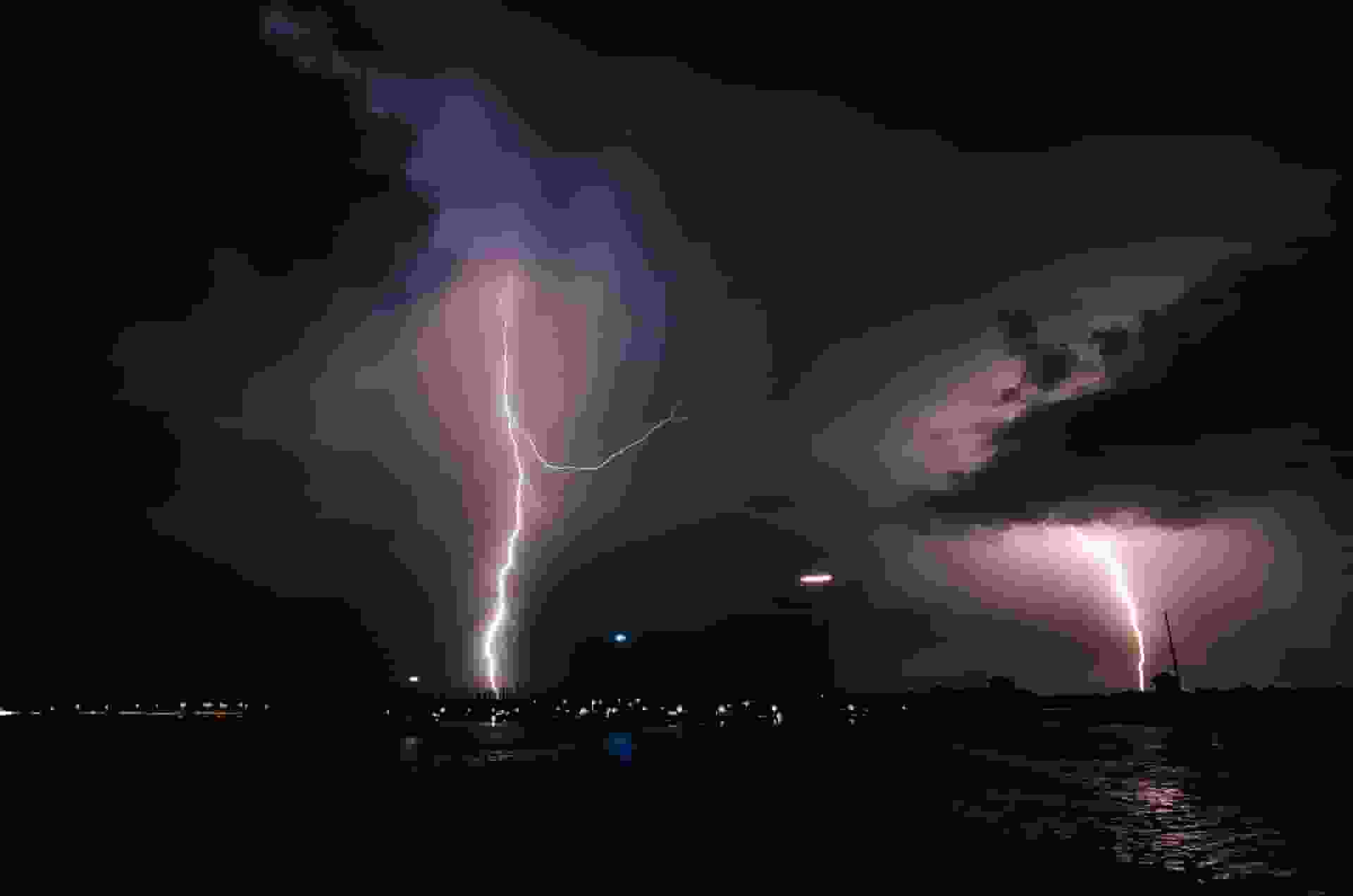
At first, scientists demonstrated that a powerful laser beam directed at the sky can create a “virtual lightning rod” capable of diverting the path of lightning strikes.
The study, which was published on Monday in the journal Nature Photonics, could lead to better lightning protection methods for critical infrastructure such as power plants, airports, and launchpads.
Scientists Use Powerful Laser Beam
Until now, the Franklin rod has been the most commonly used lightning protection device.
It is an electrically conducting metal pole on top of buildings and other infrastructure that intercepts lightning discharges and safely guides them to the ground, according to scientists from Ecole Polytechnique in France.
They demonstrated in the new study that a powerful laser beam directed at the sky could act as a virtual, movable rod and provide an alternative.
While previous lab experiments have shown that intense laser pulses can guide lightning strikes, researchers claim that no previous field studies have experimentally demonstrated guiding lightning using such powerful light beams.
To put this theory to the test, scientists from Ecole Polytechnique, including Aurélien Houard, conducted experiments on the Säntis Mountain in northeastern Switzerland during the summer of 2021.
Read more: New AI can copy anyone’s voice in 3 seconds; Is this helpful or harmful in human technology?
Changes In Experiment

They installed a Laser Lightning Rod (LLR) the size of a large car that can fire up to a thousand pulses per second near a telecommunications tower that is struck by lightning approximately 100 times per year.
According to the researchers, the device generates channels of ionized air with charged particles that can be used to guide lightning along its beam. They claim that by extending upwards from a traditional lightning rod, the LLR device can virtually increase its height and the surface area it protects.
The data collected when the laser filament was produced above the tower was then compared to data collected when the tower was naturally struck by lightning.
In over six hours of operation during a thunderstorm, they observed that the laser could divert the path of four upward lightning discharges. The findings were also supported by the use of electromagnetic waves generated by lightning to pinpoint the strikes.
Researchers were also able to record one of the strikes using high-speed cameras, revealing that the strike followed the laser path for more than 50m.
In the Säntis experiment, a strong laser was placed next to a 124-meter-tall telecom tower that experiences lightning strikes about 100 times each year.
Between July and September 2022, during a stormy season, researchers shot laser pulses at the thunderclouds for more than six hours.
Four upward lightning discharges were deflected by the laser, according to the strikes’ recording devices. A sufficiently intense laser beam, like a metal wire, can create a conductive path for lightning to travel.
Laser pulses change the properties of the air, specifically the refractive index, causing the beams to condense into a thin, intense filament. This, in turn, heats the air, reducing its density and allowing lightning to strike.
Read more: Bitcoin and Ethereum: Here are several things to watch amid rise following inflation data

